THE ONLY WAY TO DESCRIBE ONE OF EUROPE’S MOST RECOGNIZABLE BIRDS IS SPECTACULARLY COLORFUL!
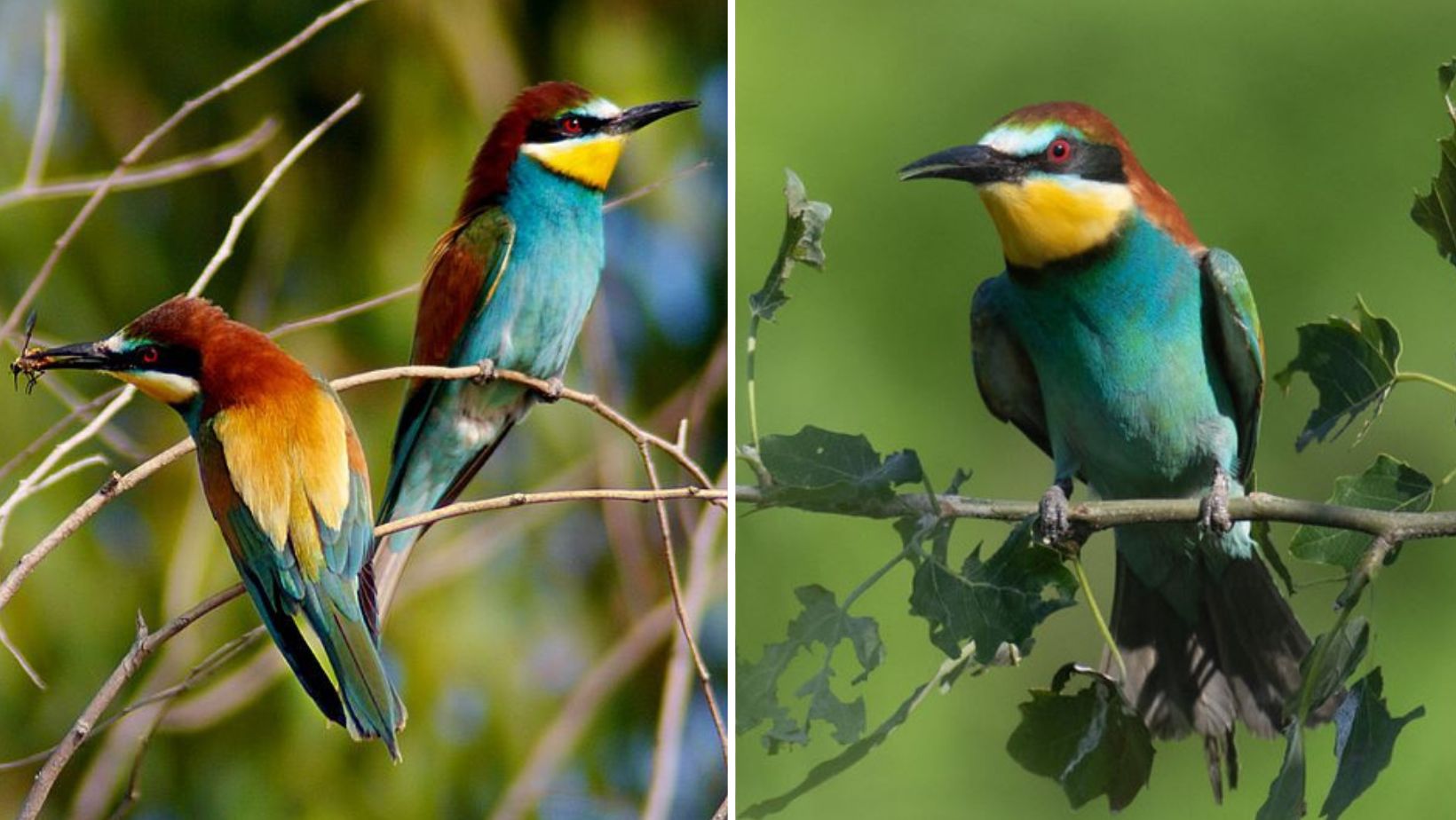
MEET THE EUROPEAN BEE-EATER
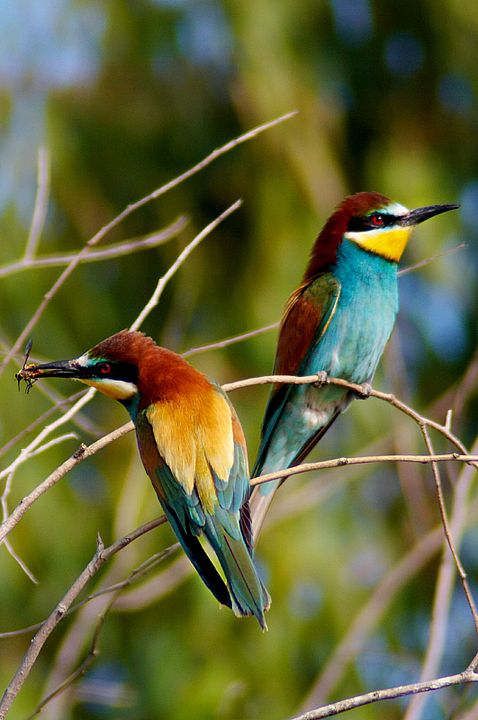
The European bee-eater (Merops apiaster) is easily recognized due to its strikingly colorful plumage. This plumage is especially striking during the breeding season when the head is topped off by a brown cap and bright yellow forehead. There is a black eye band starting from the base of the bill which extends below the eye almost to the nape of the neck. Below the bill is a bright patch of yellow boarded by a black band, below which is green-blue extending all the way down to the tail. The tail itself has a central spike caused by two elongated feathers which are easier to see during flight.
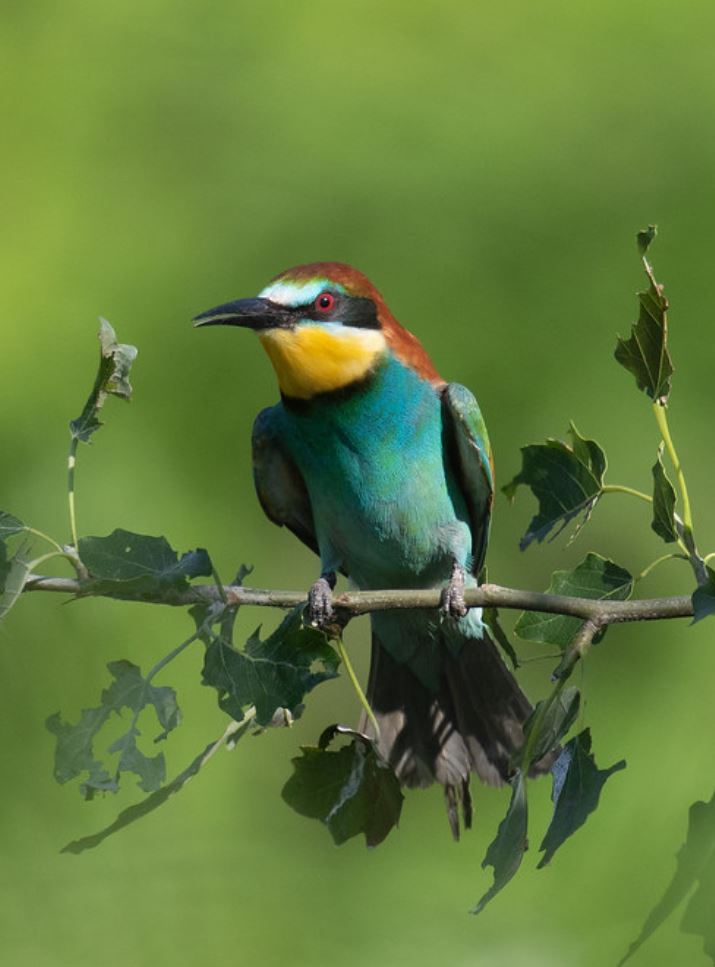
Female birds look similar to male birds though the scapulars and back are greener and the throat and breast look paler than the males.
Juvenile birds are duller with brown eyes, as opposed to the adult bird’s red eyes.
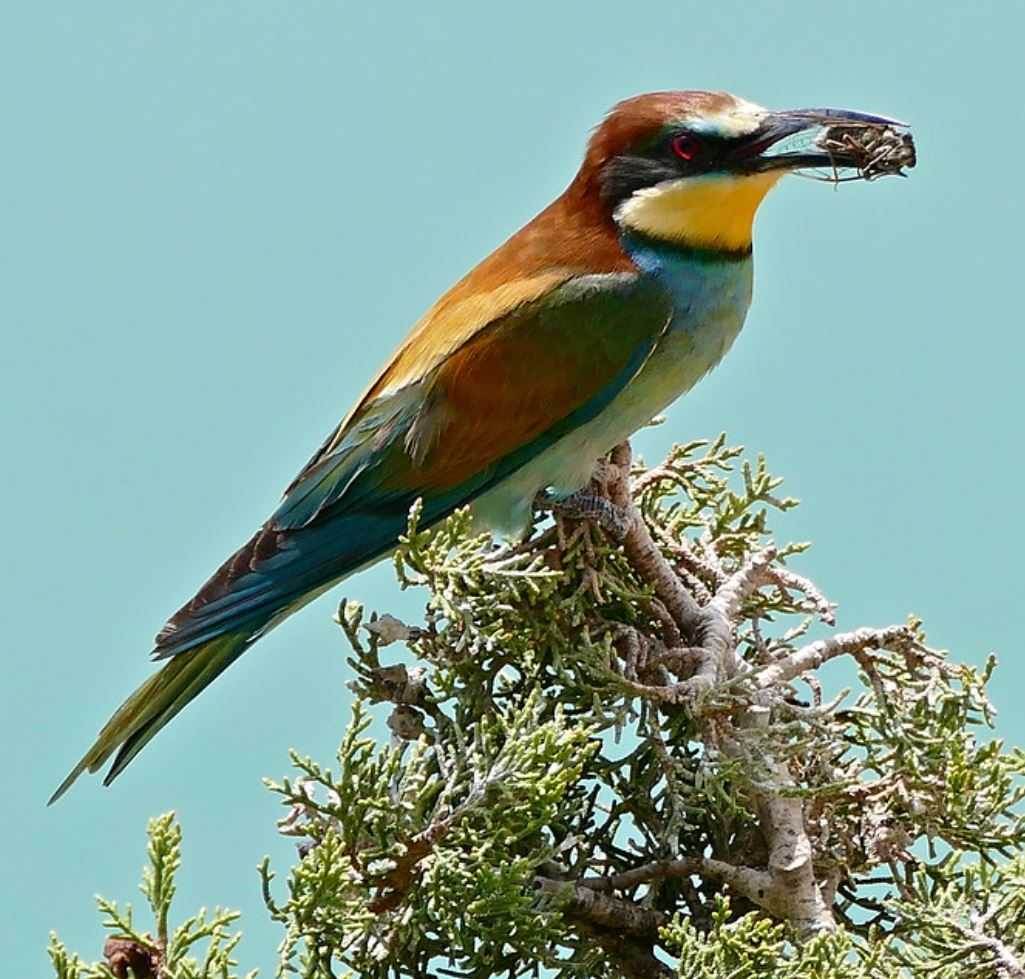
These birds breed in southern and central Europe, northern and southern Africa as well as Asia. Except for a resident south African population, they migrate to winter over in tropical Africa.
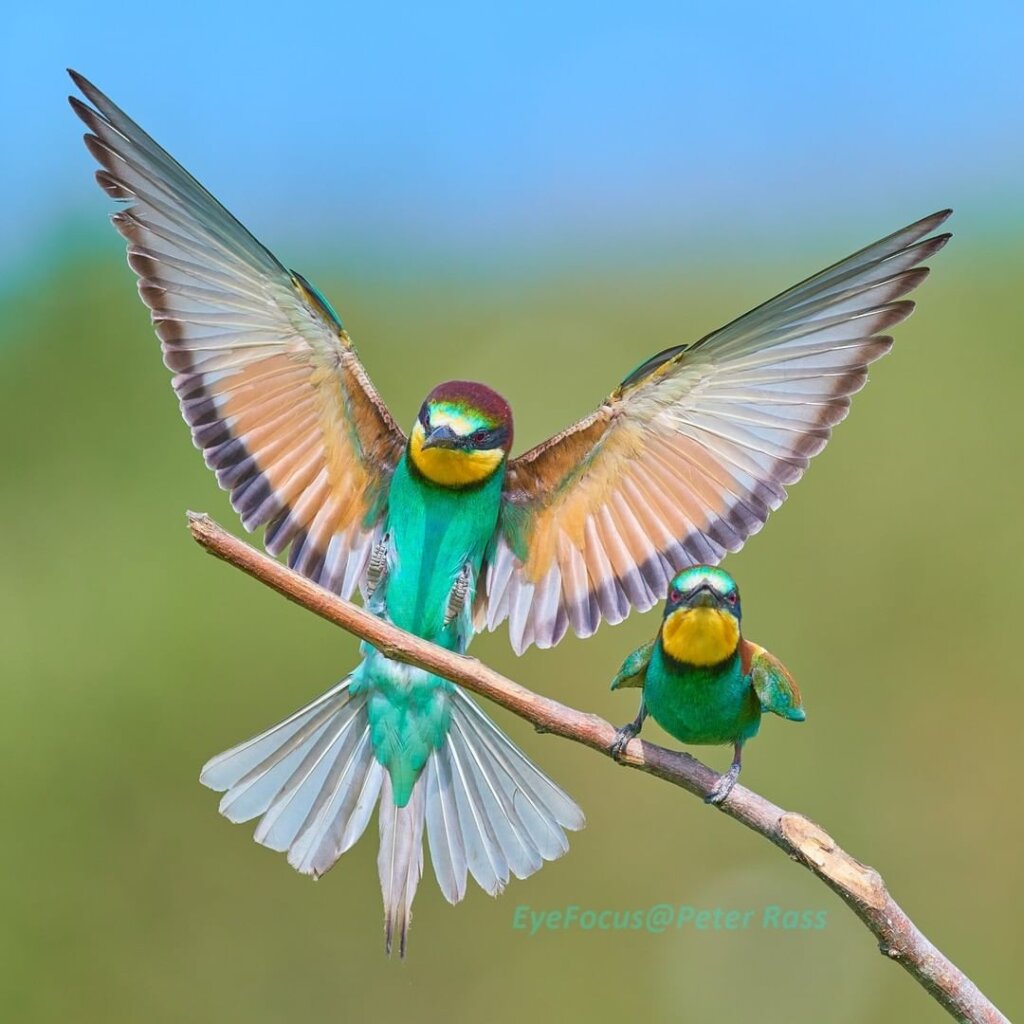
European Bee-eaters like to be in and around river valleys, cultivated areas containing trees, pastures, plains, and semi-desert areas that have shrubs.
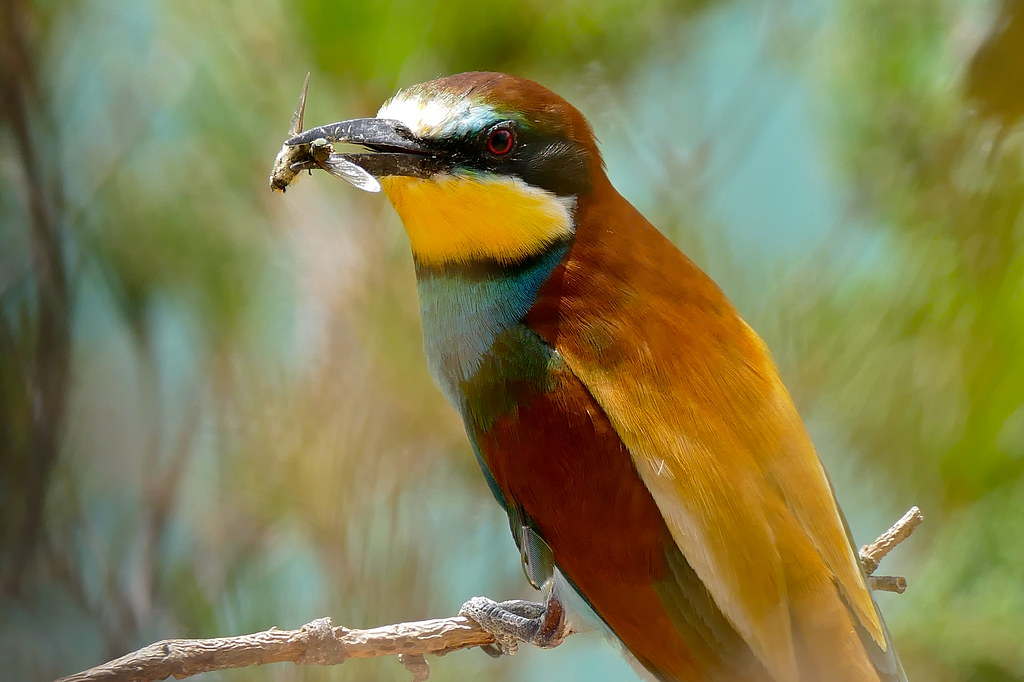
They prefer to catch their food on the wing dining on insects, especially bees. Though they will also take wasps, locusts, and dragonflies.

During the breeding season, European Bee-eaters burrow into sandy banks or cliff-top soil to build a nest with their lifelong partner, sometimes with the help of earlier offspring. Females usually lay anywhere from 4 to 6 eggs within from April through to July in the northern hemisphere. Or from October through to November in South Africa. These eggs are incubated for up to 20 days by both parents with the female taking the night shift. Hatchlings fledge about one month after hatching.
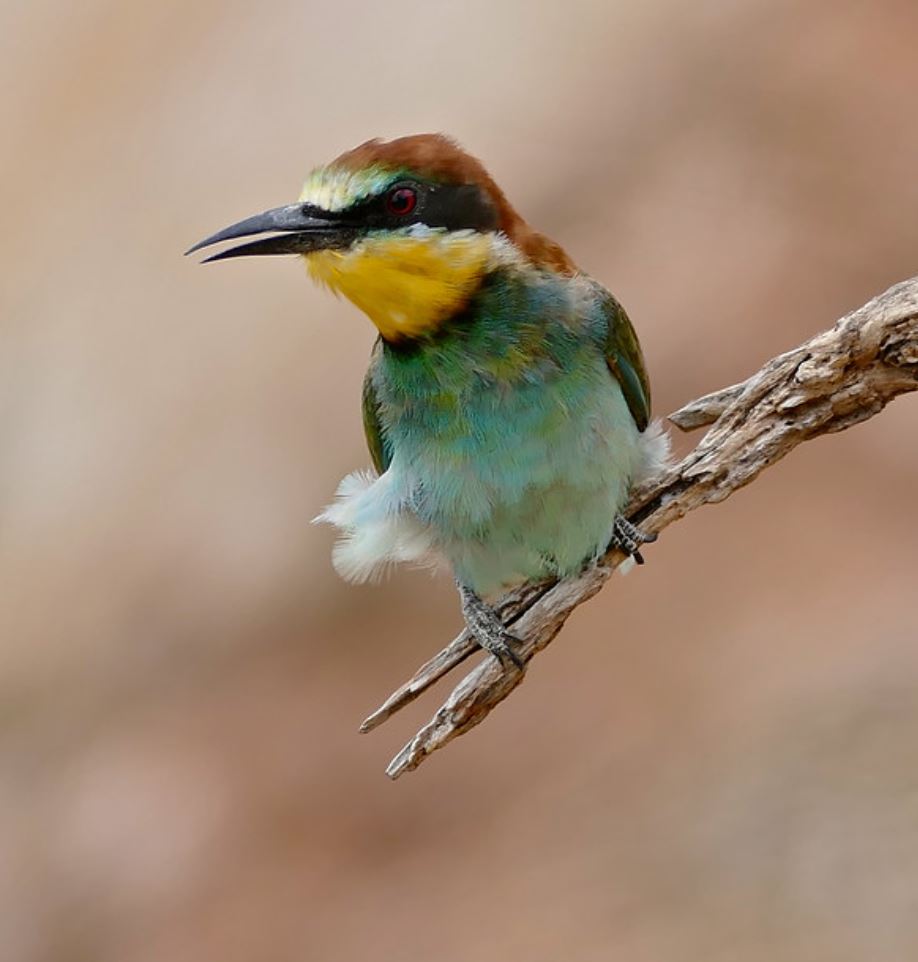
Though hunted as a pest the European Bee-eater is regarded as of Least Concern on the IUCN Red List.
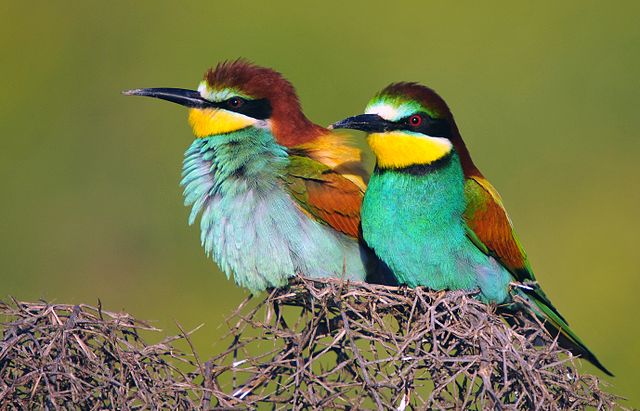
Photo Courtesy of Dûrzan cîrano / CC BY-SA 3.0
YOU CAN WATCH THIS SPECIES RIGHT HERE IN THE VIDEO BELOW:

